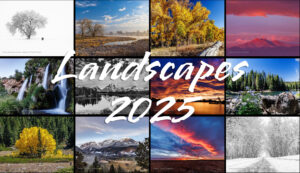
Some nesting bald eagles may force at least one summer road project to be delayed.
According to the Longmont Times-Call, a pair is nesting near where a bridge on Boulder’s East County Line Road / Weld County Road 1 was washed out during last September’s big flood event.
Boulder County Transportation director George Gerstle told the Times-Call that it could be late summer before the project gets underway depending on when the fledgling birds leave the nest.
When that happens, construction can finally begin on replacing the bridge over the St. Vrain River that was washed out in last September’s flood, Gerstle said.
He said Boulder County is being careful to comply with guidelines the U.S. Endangered Species Act sets for such projects in order to ensure that the Federal Highway Administration will reimburse Boulder County for most or all of the estimated $4 million to $5 million total it’s expected to cost to design and build the new bridge.
I believe there has been a rather noticeable increase in bald eagles this winter along the Colorado Front Range. It seems like with little effort one can find them, even in areas quite populated. Indeed, one of my favorite places has been along the South Platte River in the north Denver area suburbs.
It will be interesting to see if more stories like this are repeated in the coming month or so as eagles mate.
In 2007 the bald eagle was removed from the endangered species list after staging an extraordinary comeback. It is however protected by the 1940 Bald and Golden Eagle Protection Act.
In Colorado, the state’s Division of Wildlife has established guidelines establishing buffer zones around the bird’s activities. Those state:
Nest Site:
No surface occupancy (beyond that which historically occurred in the area; see ‘Definitions’ below) within ¼ mile radius of active nests (see ‘Definitions’ below). Seasonal restriction to human encroachment (see ‘Definitions’ below) within ½ mile radius of active nests from October 15 through July 31. This closure is more extensive than the National Bald Eagle Management Guidelines (USFWS 2007) due to the generally open habitat used by Colorado’s nesting bald eagles.Winter Night Roost:
No human encroachment from November 15 through March 15 within ¼ mile radius of an active winter night roost (see ‘Definitions’ below) if there is no direct line of sight between the roost and the encroachment activities. No human encroachment from November 15 through March 15 within ½ mile radius of an active winter night roost if there is a direct line of sight between the roost and the encroachment activities. If periodic visits (such as oil well maintenance work) are required within the buffer zone after development, activity should be restricted to the period between 1000 and 1400 hours from November 15 to March 15.Hunting Perch:
Diurnal hunting perches (see ‘Definitions’ below) associated with important foraging areas should also be protected from human encroachment. Preferred perches may be at varying distances from human encroachment and buffer areas will vary. Consult the Colorado Division of Wildlife for recommendations for specific hunting perches.

